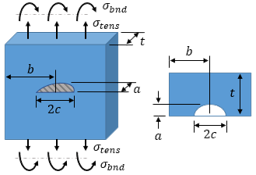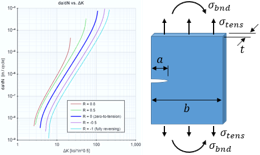Fracture Materials Database Instructions
This page outlines the general use of the Fracture Materials Database.
Reference
The fracture and fatigue crack growth properties of interest are described in our fracture mechanics reference page and our fatigue crack growth reference page.
"Your Materials" vs. "Materials Database"
There are 2 different tabs within the database:
- Your Materials
- Materials Database
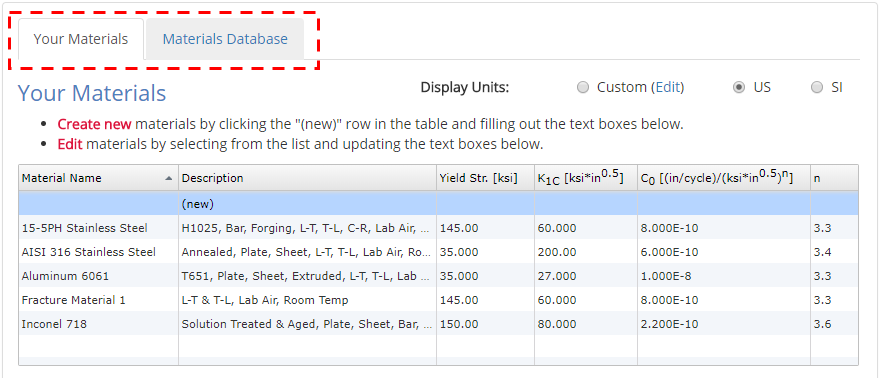
These tabs will be discussed in the following sections.
"Your Materials" Tab
The "Your Materials" tab contains all of the materials that can be used within the fracture mechanics calculator and fatigue crack growth calculator on this website. These calculators will display all materials that exist in this tab.
You can create new materials from scratch on this tab, or you can copy materials from the database on the next tab. You can also edit and delete materials on this tab.
Materials Table
At the top of the "Your Materials" tab is a table showing all of the materials in your list. Select a material by clicking on it in the table. The selected material will be highlighted in blue:
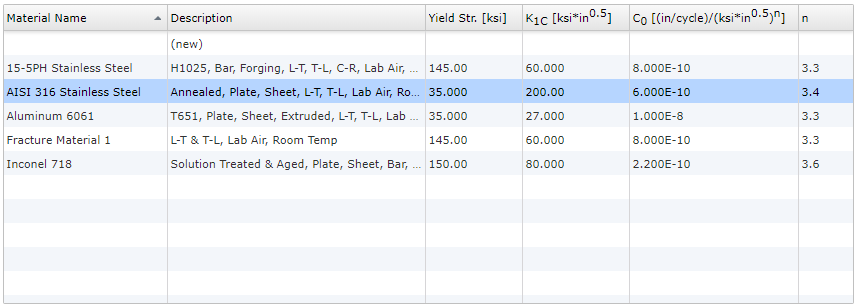
Viewing & Editing Materials
After selecting a material, all of the relevant mechanical, fracture, and fatigue crack growth properties for the material will be displayed in a form beneath the table:
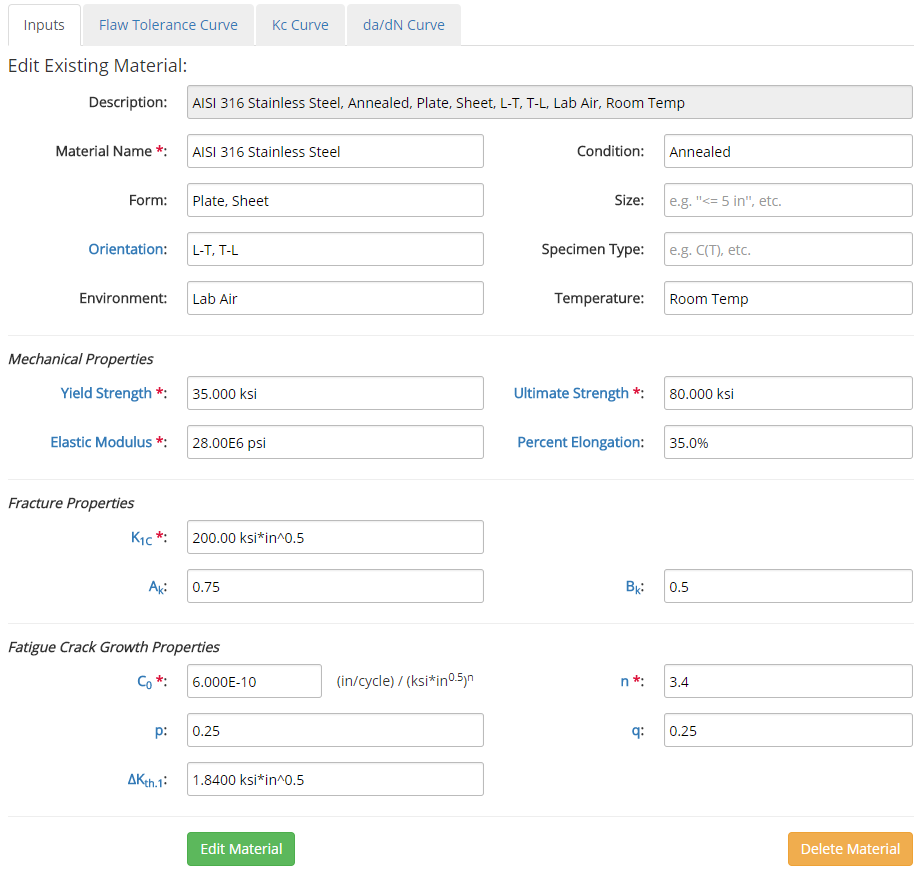
You can edit the material properties within the form abve. After making the desired edits, click the green "Edit Material" button. You can also delete the selected material by clicking the orange "Delete Material" button.
Adding Materials
If the "(new)" row in the materials table is selected (this is the very first row in the table), a blank form will be displayed as shown below:
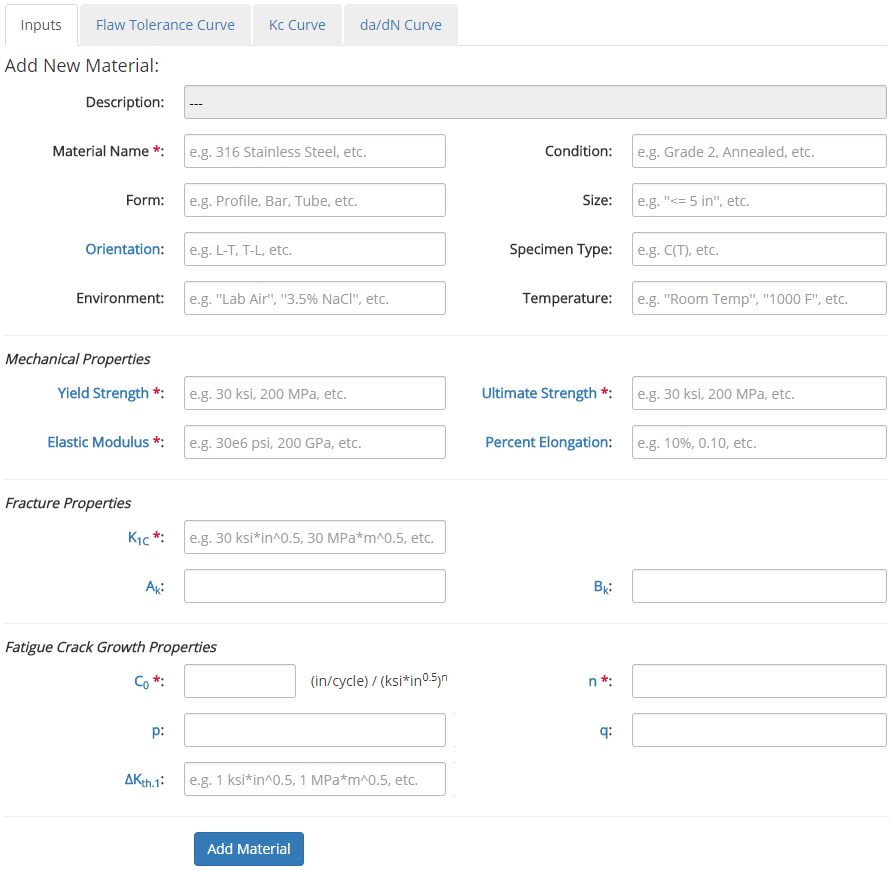
To add a new material, fill out the blank form with the relevant material properties and click the "Add Material" button. A field with a red asterisk indicates a required material property that must be input before the material can be added. After the material is added, an entry for the material will appear in the materials table above the form and the material will be available for use in the calculators.
Flaw Tolerance Curve
When a material in the "Your Materials" list is selected, a flaw tolerance curve for that material is made available as shown below:
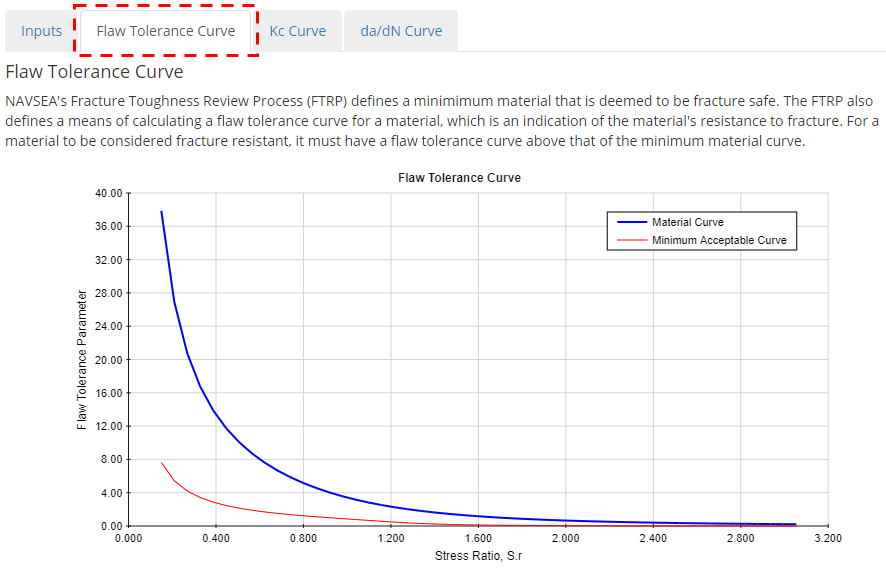
Fracture Toughness vs. Thickness Curve
When a material in the "Your Materials" list is selected, a fracture toughness vs. thickness curve for that material is made available as shown below:
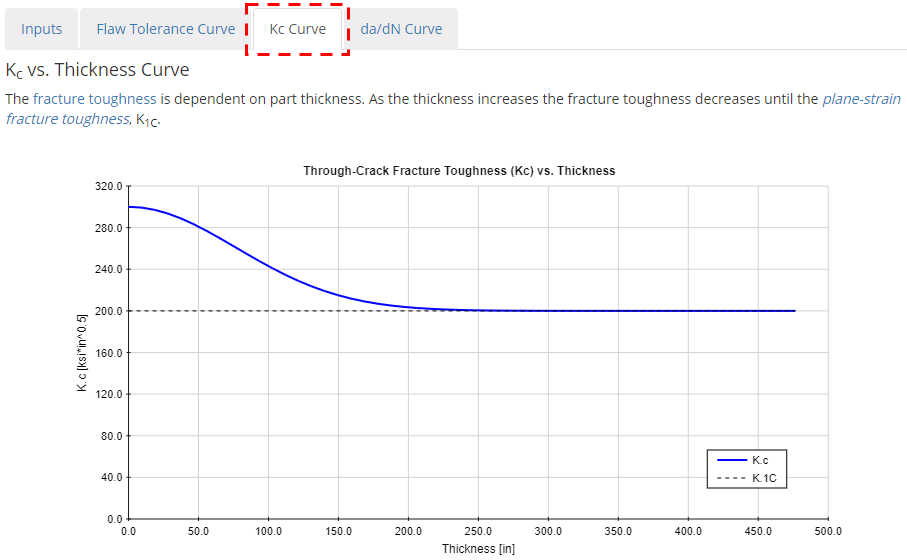
Crack Growth Rate (da/dN) Curve
When a material in the "Your Materials" list is selected, a crack growth rate (da/dN) curve for that material is made available as shown below:
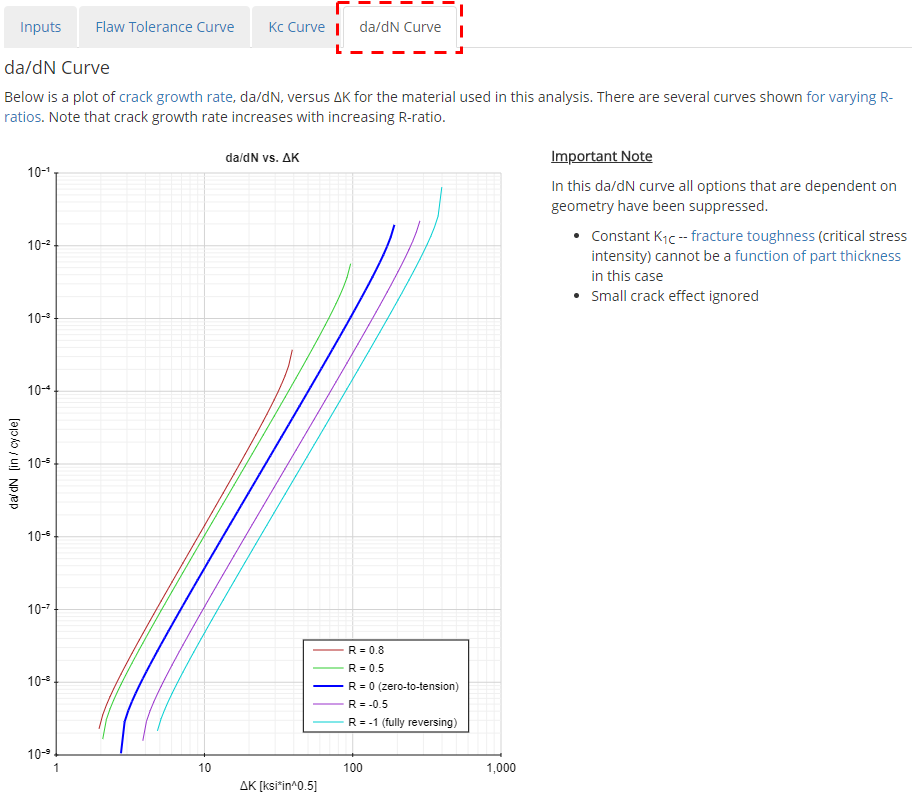
"Materials Database" Tab
The "Materials Database" tab contains a repository of common engineering materials. You can browse the database to look for a specific material:
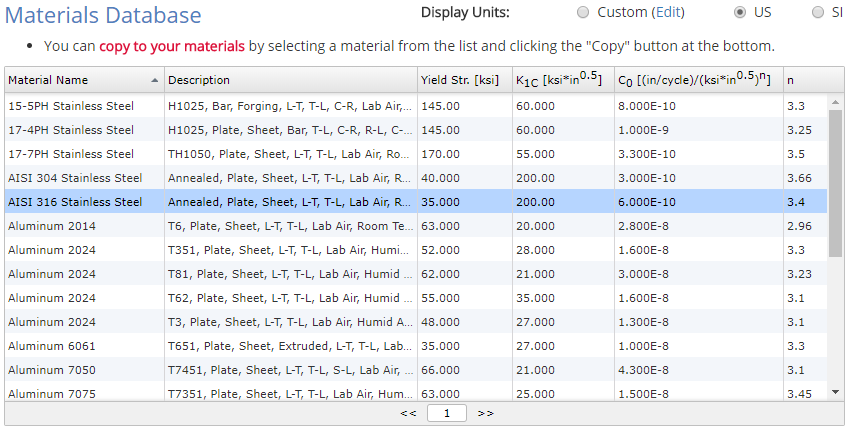
If you click on a material in the table (as shown above), all of the relevant mechanical, fracture, and fatigue crack growth properties for the selected material will be shown in a form below the table:
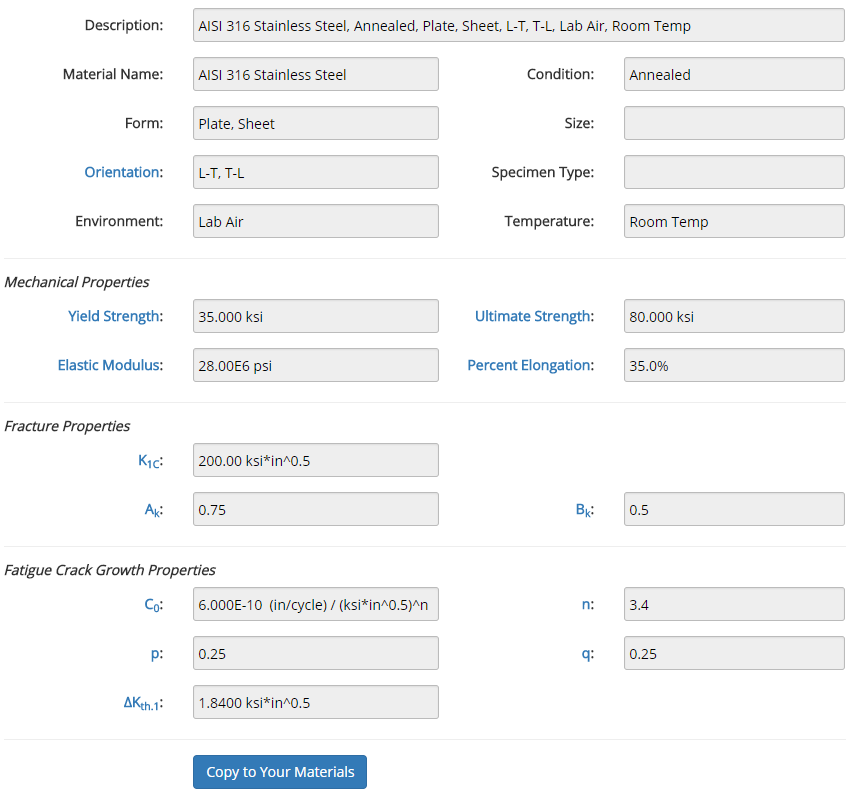
If you find a material in the database that you would like to add to the "Your Materials" tab, you can copy it by clicking the "Copy to Your Materials" button as shown in the form above. After copying a material from the database, you will be able to edit it, and it will also be available for use in the fracture mechanics calculator and fatigue crack growth calculator on this site.
